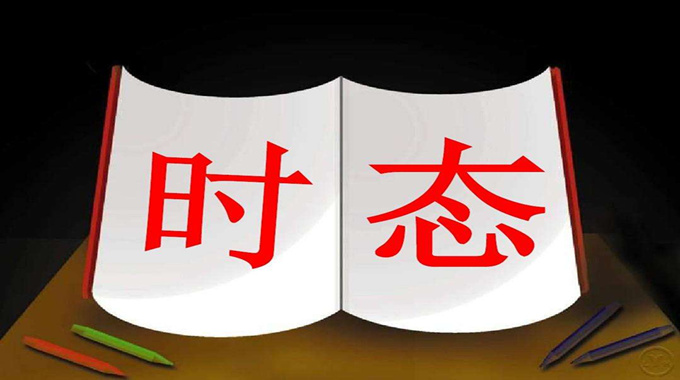中考英语必考八大时态结构及用法详解(下)
http://www.newdu.com 2025/09/18 07:09:48 三好网 佚名 参加讨论
时态无疑是初中英语最重要的语法内容,学好时态基本就拿下了语法的半壁江山。今天总结的八种时态是大家在初中阶段必学必考的,中考复习时一定要加倍重视哦!(温馨提示:不要忘记收藏哦,用时好找)  一般将来时 1. 概念:表示将要发生的动作或存在的状态及打算、计划或准备做某事。 2. 时间状语:tomorrow, next day(week, month, year),soon, in a few minutes, by the day after tomorrow, etc. 3. 基本结构:①am/is/are/going to + do;②will + do. 否定形式:①am/is/are+not+going to + do②will not(won't)+ do. 一般疑问句:①am/is/are放于句首;②will提到句首。 4. will主要用于在以下三个方面: 1) 表示主观意愿的将来。 They will go to visit the factory tomorrow. 明天他们将去厂参观工厂。 I’ll come with Wang Bing, Liu Tao and Yang Ling. 我将和王兵、刘涛、杨玲一起来。 2) 表示不以人的意志为转移的客观的将来。 Today is Saturday. Tomorrow will be Sunday. 今天是星期六。明天是(将)是星期日。 He will be thirty years old this time next year. 明年这个时候他就(将)三十岁。 3) 表示临时决定,通常用于对话中。 —Mary has been ill for a week. 玛丽病了一周了。 —Oh, I didn't know. I will go and see her. 噢,我不知道。我去看看她。 5. be going to主要用于一下两个方面: 1) 表示事先经过考虑、安排好打算、计划要做某事。 Dad and I are going to watch an opera this afternoon. 今天下午我和爸爸打算去看歌剧。 2) 表示根据目前某种迹象判断,某事非常有可能发生,表示推测。 Look! There come the dark clouds. It is going to rain. 瞧!乌云密集。天要下雨了。 过去将来时 1. 概念:立足于过去某一时刻,从过去看将来,常用于宾语从句中。 2. 时间状语:the next day(morning, year),the following month(week),etc. 3. 基本结构:①was/were/going to + do;②would + do. 否定形式:①was/were/not + going to + do;②would + not + do. 一般疑问句:①was或were放于句首;②would 提到句首。 4. 用法 1) “would+动词原形”常表示主观意愿的将来。例如: He said he would come to see me. 他说他要来看我。 He told me he would go to Beijing. 他告诉我他将去北京。 2) “was/ were+going to+动词原形”常表示按计划或安排即将发生的事。例如: She said she was going to start off at once. 她说她将立即出发。 I was told that he was going to return home. 有人告诉我他准备回家。 此结构还可表示根据某种迹象来看,很可能或即将发生的事情。例如: It seemed as if it was going to rain. 看来好像要下雨。 3) come, go, leave, arrive, start等瞬时动词动词可用过去进行时表示过去将来的含义。例如: He said the train was leaving at six the next morning. 他说火车将于第二天早晨六点离开。 She told me she was coming to see me. 她告诉我她要来看我。 现在完成时 1. 概念:过去发生或已经完成的动作对现在造成的影响或结果,或从过去已经开始,持续到现在并且有可能继续下去的动作或状态。 2. 时间状语:recently, lately, since, for, in the past few years, etc. 3. 基本结构:have/has + done 否定形式:have/has + not +done. 一般疑问句:have或has。 4. since的三种用法 1) since +过去一个时间点(如具体的年、月、日期、钟点、1980, last month, half past six)。 例如:I have been here since 1989. 1989起,我一直在这儿。 2) since +一段时间+ ago。 例如:I have been here since five months ago. 我在这儿,已经有五个月了。 3) since +从句(一般过去时)。 例如:Great changes have taken place since you left. 你走后,变化可大了。 比较since和for since 用来说明动作起始时间,for用来说明动作延续时间长度。 例如:I have lived here for more than twenty years.我住在这儿二十多年了。 注意:并非有for 作为时间状语的句子都用现在完成时。 I worked here for more than twenty years. (我现在已不在这里工作。) 过去完成时 1. 概念:以过去某个时间为标准,在此以前发生的动作或行为,或在过去某动作之前完成的行为,即“过去的过去”。 2. 时间状语:before, by the end of last year(term, month),etc. 3. 基本结构:had + done. 否定形式:had + not + done. 一般疑问句:had放于句首。 4. 用法 1) 在told, said, knew, heard, thought等动词后的宾语从句种。 例如:She said (that)she had never been to Paris. 她告诉我她曾去过巴黎。 2) 在过去不同时间发生的两个动作中,发生在先,用过去完成时;发生在后,用一般过去时。 例如:When the police arrived, the thieves had run away. 警察到达时,小偷们早就跑了。 3) 表示意向的动词,如hope, wish, expect, think, intend, mean, suppose等,用过去完成时表示"原本…,未能…"。 例如:We had hoped that you would come, but you didn't. 那时我们希望你能来,但是你没有来。 注意: had hardly… when... 刚......就......。 例如:I had hardly opened the door when I he hit me. 我刚打开门,他就打了我。 had no sooner…than 刚…… 就……。 例如:He had no sooner bought the car than he sold it. 他刚买了这辆车,转眼又卖了。 (责任编辑:admin) |